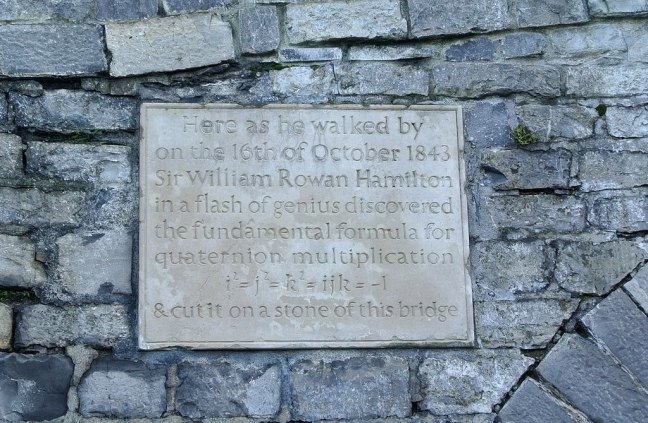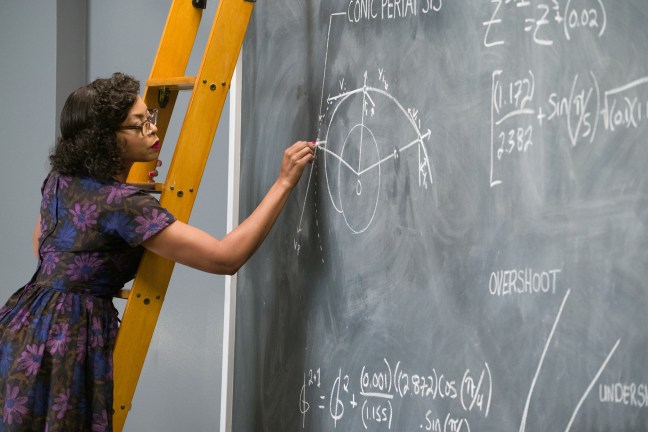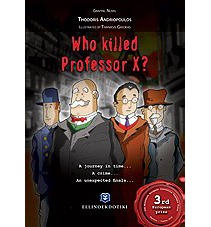While searching for posts to add to the Playful Math Carnival, I stumbled on a new-to-me math holiday.
Hamilton Day celebrates mathematical discovery — that “Aha!” moment when your eyes are opened and you see something new.
Or something new-to-you. That’s worth celebrating, too.
History of Hamilton Day
 Irish mathematician William R. Hamilton was struggling with a tough math problem in October, 1843. It had him stumped. Then on the 16th, as he walked along Dublin’s Royal Canal with his wife, inspiration struck.
Irish mathematician William R. Hamilton was struggling with a tough math problem in October, 1843. It had him stumped. Then on the 16th, as he walked along Dublin’s Royal Canal with his wife, inspiration struck.
He suddenly realized he could look at the problem from a new direction, and that would make everything fall into place.
“And here there dawned on me the notion that we must admit, in some sense, a fourth dimension of space for the purpose of calculating with triples … An electric circuit seemed to close, and a spark flashed forth.”
—Sir William Rowan Hamilton
In one of the most famous acts of vandalism in math history, Hamilton pulled out a knife and scratched his new equation into the stone of the Broome Bridge: i² = j² = k² = ijk = -1.
Also by Hamilton
“Who would not rather have the fame of Archimedes than that of his conqueror Marcellus?”
—Sir William Rowan Hamilton
quoted in H. Eves, Mathematical Circles Revisited
Why Celebrate Hamilton Day
“So there’s much to celebrate on Hamilton Day. Beyond its utility, we can appreciate mathematics as a human endeavor, with struggles and setbacks and triumphs. We can highlight the opportunity math affords for daring, creativity, and out-of-the-box thinking.
“Hamilton Day could, in other words, pivot away from Pi Day’s gluttony and memorization, neither of which is part of mathematics, toward the intellectual freedom and drama that are.”
— Katharine Merow
Celebrate Hamilton Day, a Better Mathematical Holiday
How Will You Celebrate?
- Learn about a new-to-you math topic.
- Work on a tough math problem.
- Think about different ways to do things.
- Try a nonstandard approach.
- Talk about how it feels when you learn something new and it finally makes sense.
I’ve penciled Hamilton Day (October 16) into my calendar for next year.
How about you?
I’d love to hear your ideas for celebrating math! Please share in the comments section below.

* * *
This blog is reader-supported.
If you’d like to help fund the blog on an on-going basis, then please join me on Patreon for mathy inspiration, tips, and an ever-growing archive of printable activities.
If you liked this post, and want to show your one-time appreciation, the place to do that is PayPal: paypal.me/DeniseGaskinsMath. If you go that route, please include your email address in the notes section, so I can say thank you.
Which I am going to say right now. Thank you!
“Happy Hamilton Day (Belated)” copyright © 2020 by Denise Gaskins.
Commemorative plaque photo (top) by Cone83, CC BY-SA 4.0. Hamilton portrait by Unknown artist and “Death of Archimedes” by Thomas Degeorge, public domain. All via Wikimedia Commons.



